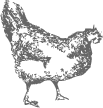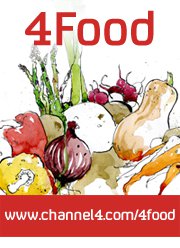
Cooking pasta by the absorption method (risotto style) was all the rage in the food blog world a couple of years back. A recent revisit has uncovered that it works really well with wholewheat pasta, especially when its combined with the bounties of summer (the sweetest tomatoes, fresh green beans and grassy pea shoots).
The absorption method is a pretty handy way to get a soft, savoury pasta sauce without the calories and fat of your alfredos and carbonaras. The starch released by the pasta is captured in the cooking liquor giving the pasta a silky quality and taking it a step beyond summer’s simpler pasta salads. The aim here is to cook the pasta just as you would cook a risotto, gently adding liquid and stirring regularly. The only real potential for error with this technique is if you add the liquid too quickly and on too ferocious a heat, creating a pasta with a soggy outside and hard uncooked centre. This is even more important to watch out for when you’re using wholewheat pasta but that’s OK, treat this as a chance to slow down for a while and line up a cup of tea or a podcast or a book or just sit and stir.

This year has bought us a bumper crop of cherry tomatoes (red alert and gardeners delight for you garden geeks). I’ve been making oven dried tomatoes using Wendy’s method which produces something soft and sweet more like a sun blush tomato, not one of those nasty leathery sun dried offerings.
There’s no need to buy pea shoots especially if you don’t grow them. They do have a lovely fresh grassy note but are expensive to buy and not always easy to get hold of. Any other tender green leaves that you have in the fridge will do such as rocket, baby spinach, watercress.
 A word about the stock
A word about the stock
I’ve specified a light stock in the recipe for two reasons. First up, I can’t see the logic in spoiling all of these lovely healthy ingredients with a huge side order of sodium. Secondly, this recipe is all about fresh summer produce which is all too easily overshadowed with the strong, storecupboard flavour of a shop-bought stock made up to full strength. I use a low sodium vegetable bouillion stock diluted to half strength. If you’re feeling adventurous you might like to try this idea on 101 cookbooks for making your own bouillion paste
Recipe for Absorption-method wholewheat pasta with sun blush tomatoes, french beans and feta
Serves 2
1 tablespoon olive oil
1 red onion, diced
150g dried wholewheat pasta (short, chunky shapes or shells)
1 litre light vegetable stock
French beans, trimmed and chopped into short segments (about a cupful)
2 tablespoons oven dried or sun blush tomatoes
2 tablespoons flaked almonds
Zest of 1 lemon
Juice of half a lemon
Pea shoots, a good handful, roughly chopped
half a cup feta cheese, crumbled
Freshly ground black pepper
In a deep sided skillet/frying pan heat the olive oil and cook the red onion on a low heat.
Meanwhile, bring your stock to a gentle simmer in a second pan.
Cook the onions until they soften and start to become translucent (between five to ten minutes).
Add the dried pasta shapes to the pan with the onions and stir gently until the pasta is glossy with a coating of olive oil.
Add a ladleful of stock to the pasta pan and stir. Keep watching and stirring until most of the stock has been absorbed by the pasta. At this point add another ladleful of stock and continue to watch and stir.
When the pasta is visibly starting to soften, add the french beans. Continue to add stock to the pasta and stir.
Test the pasta when it looks like it is cooked through. Wholewheat pasta is best al dente but not undercooked. Add another ladle of stock if it isn’t quite cooked yet.
When the pasta is done, add the lemon juice, zest, almonds and tomatoes to the pasta, mix and give a good seasoning of black pepper. Taste and add more lemon juice and pepper to suit.
Stir the pea shoots into the pasta.
Dish out the pasta and serve hot, topped with the crumbled feta.

 Come join me on Twitter
Come join me on Twitter Sophie Roberts is a registered dietitian based in Oxford, UK. She loves combining her nutrition know-how with a sustainable approach to buying and preparing food and shares her tips and recipes here at Mostly Eating.
Sophie Roberts is a registered dietitian based in Oxford, UK. She loves combining her nutrition know-how with a sustainable approach to buying and preparing food and shares her tips and recipes here at Mostly Eating. 
{ 8 comments }
Speaking of treats — and we were doing that recently on Kathryn’s blog — re-reading your post this morning has been a triple treat of:
#1) gorgeous photos
#2) evocative, tasty words
#3) thoughts of visiting the kitchen garden I share with Mom & harvesting enough green beans & tomatoes to make this recipe.
If I wasn’t already a gardener and champion of eating in season, fresh & local, this post would convince me.
Lovely work, Sophie. The garden, the chook-tending, the photography, the writing.
And I do love the containers you re-purposed for growing greens.
Thanks Elaine, I’m glad you enjoyed this and that you spotted the sneaky chook in the picture there.
We have a very kind friend who works in the wine trade who helped out with the containers!
Sorry about the problems leaving a comment – I’m not sure what’s happening but hopefully it had sorted itself out now.
Apologies to anybody else who has tried to leave a comment too.
Absolutely gorgeous recipe Sophie and I can imagine making this and adapting it in all kinds of different ways. I was vaguely aware you could cook pasta in this way, but have never tried it. Plus I hadn’t made the connection that it would produce a creamy textured pasta, without the cream. Good stuff.
I also love the little chook, scratching away in the background, going about her business. I’m assuming that the tomatoes are out of reach?
That sounds wonderful for the beans and soft juicy tomatoes that we’re getting at the moment. It’s even nicer that you grew your own, and kept them out of reach of the chooks! I remember reading in a Nigella book about making the sunblush tomatoes by leaving them in the oven overnight, in the residual heat from baking (which she cutely called moonblush tomatoes).
How did I miss this post? Shall be making this this week. Trust you implicitly since the courgette/lemon recipe a couple of years ago. I make it all the time in summer now.
Kathryn – strangely enough the chooks aren’t all that fussed about the tomatoes. They like a bit of leaf but the fruit itself apparently isn’t that interesting. I tend to wrap a low run of plastic mesh (about a foot high) in front of the plants to protect them while the plants are young. The girls soon lose interest and move on to juicier and easier treats. They could jump up and grab the leaves and fruit if really wanted to but they’re too busy stalking my chard.
Arwen – I remember Nigella’s moonblush tomatoes too! I have made them like that in the past – it’s a good way to save electricity. With these I tend to pop the tomatoes into the oven after I’ve cooked something else rather than heating it up especially.
You’re very kind Wendy. I always go back to that courgette/mint/lemon combo in summer and must confess I nearly did it again with this recipe but thought I’d better branch out!
Hi Sophie – how interesting!
I’ve never tried the absorption method of cooking pasta before, but I do believe you’ve convinced me to give it a whirl :-)
And you’re right about just sitting and stirring. I find it bizarrely relaxing (we make quite a lot of bechamel sauce, so there’s plenty of stirring goes on chez nous!).
Bravo!
Beautiful photos and what a delicious recipe. I am going to plant a surplus of cherry tomatoes next year JUST so I can make those oven dried tomatoes. Mmm.